From ceramic tiles
Ordinary tiles are recommended for the Provence, retro or Scandi styles, and large-format varieties are for minimalism. It is advisable to choose a tile size that is a multiple of the width of the countertop, so that less material is cut.
Installation features
Tiles are laid on a base made of plywood, OSB or moisture-resistant plasterboard. To protect against water, 2 – 3 layers of coating waterproofing are made. It is not advisable to fix the tiles with cement-sand mortar; it is better to use special glue.
It is also important not to skimp on the seams – expensive epoxy grout will last much longer, maintaining its cleanliness and original shade.
The ends are finished with a tile border or covered with an aluminum profile.
Pros and cons
A tile countertop is one of the most popular homemade solutions. Its advantages:
- moisture resistance;
- the ability to put hot items on without additional protection;
- hygienic;
- environmentally friendly;
- aesthetics and varied design.
The disadvantages include fragility – the tile may crack if hit hard. However, it is easy to replace it with a whole one, without removing the entire coating.
You can cover the countertop and the work apron with the same tiles – this technique visually expands the space and is especially good for a small kitchen.
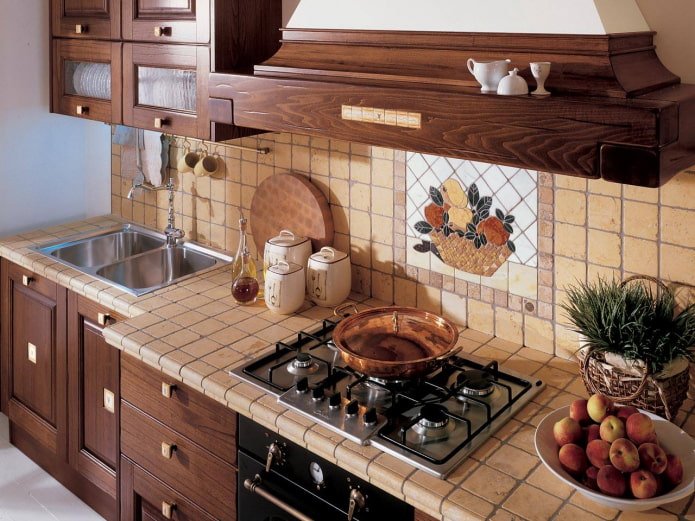
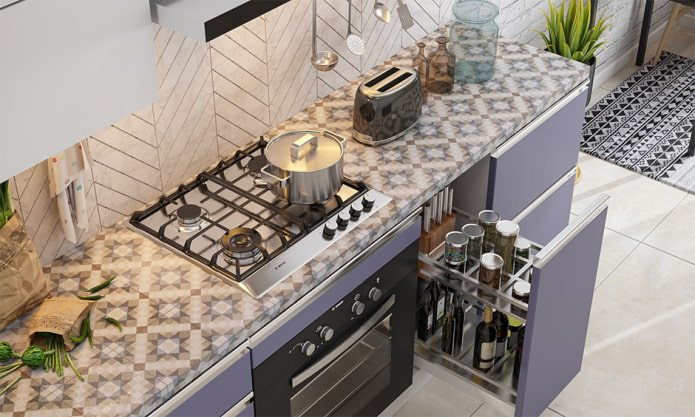
Made of porcelain stoneware
Porcelain stoneware tiles are similar to ceramic tiles in many ways, but in times stronger and more durable. For countertops, it is preferable to use a large format – 60×60 or 120×60 cm. It forms an almost seamless coating that can withstand heavy mechanical loads. And this is not the only advantage of porcelain stoneware.
Modern printing technologies allow us to accurately convey the texture of natural wood or stone in the material. We get a countertop made of marble or other valuable species at an affordable price and only up close will it be clear that this is an imitation.
Installation Features
Porcelain stoneware and tiles are laid almost the same way, since the properties of these materials are similar. But there are also features. Porcelain stoneware does not absorb moisture, so ordinary tile adhesive is not suitable for it. Craftsmen use special elastic compounds with a high degree of adhesion.
For the countertop, it is better to choose glue of at least class C1 – it provides good adhesion to wood, plasterboard and other surfaces that can “play” under heavy porcelain tiles.
The high strength of the material is both an advantage and a disadvantage. Porcelain tiles are difficult to process, we will need an electric tile cutter and professional skills to work with it. In addition, the material is 2-3 times more expensive than traditional tiles.
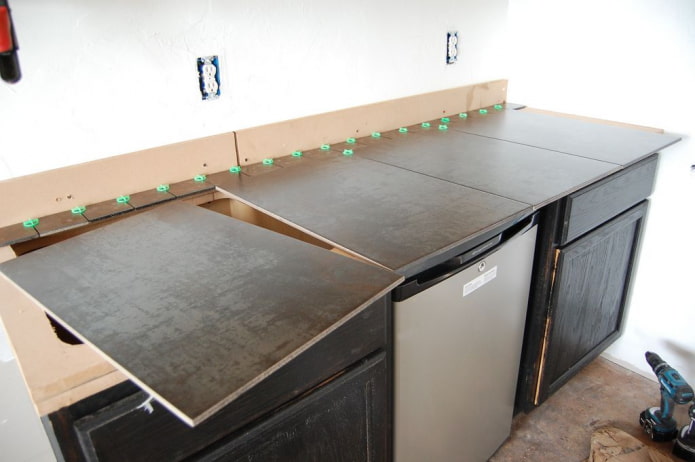

Mosaic
A mosaic countertop is a bright accent that gives the kitchen a Mediterranean flavor. Small tiles are indispensable for complex curved surfaces and multi-level joints, for example, around the window sill. Countertops are finished with ceramic or matte glass mosaics (smalt) – this is the most common and practical option.
Also for interiors in the bohemian style, you can use compositions of broken tiles with different textures and patterns. Laying “motley” pieces of ceramics will take more time than ready-made mosaic panels. But as a reward, we will get a truly exclusive and budget countertop. In addition, we will be able to utilize the breakage in the best possible way.
Laying features
Preparing surfaces for mosaics is the same as for other types of tiles. The material is supplied on a special backing, in the form of sheets of different sizes. The mosaic on paper is laid with tiles on glue, and then the base is removed, revealing the front side. The panel on a silicone or polymer backing is attached directly to it, without turning it over or removing it.
Only light-colored glue is chosen, especially for translucent smalt. It is better to use epoxy-based grout.
Pros and cons
Ceramic mosaics have the same advantages as tiles or porcelain stoneware, but they offer more decorative possibilities. Smalt is stronger than ceramic analogues and looks impressive, as if letting light through from the inside. The main disadvantage of mosaic is its high cost and a large number of seams that require maintenance.

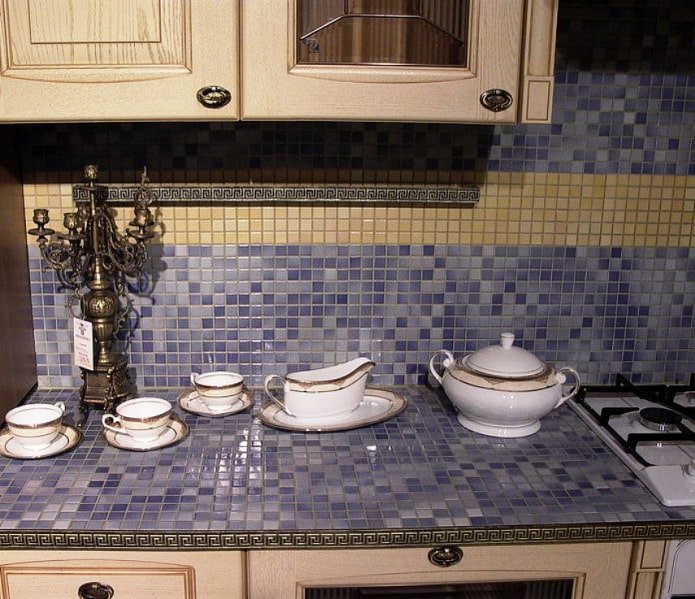
From boards
Warm, beautiful, alive – no matter how many new materials appear, nothing compares to natural wood. It is most convenient to make a countertop from a furniture board, but this solution cannot be called budgetary. Therefore, tongue and groove floorboards are often chosen, which provide a simple and durable connection.
Considering the features of the kitchen countertop, the following are recommended for it:
- larch,
- oak,
- ash,
- spruce.
Home craftsmen also love pine for its ease of processing and reasonable cost. However, its wood is soft and requires additional strengthening impregnations.
Installation Features
It is important to choose a flat, high-quality and well-dried board, which will not warp in the future. Wood with a rich texture looks impressive, the main thing is that there are no falling knots.
Installation is carried out on a base made of plywood, which simplifies the process and makes the structure stronger. The finished tabletop must be sanded and coated with several layers of varnish or water-repellent oil.
Advantages and disadvantages
The advantages of a tabletop made of planks are obvious. However, in order for it to last a long time, regular maintenance and careful handling are required. You cannot place hot metal utensils on the wood, and spilled liquids must be removed quickly. To prevent rotting and damage by insects, the protective coating of the boards is regularly restored.
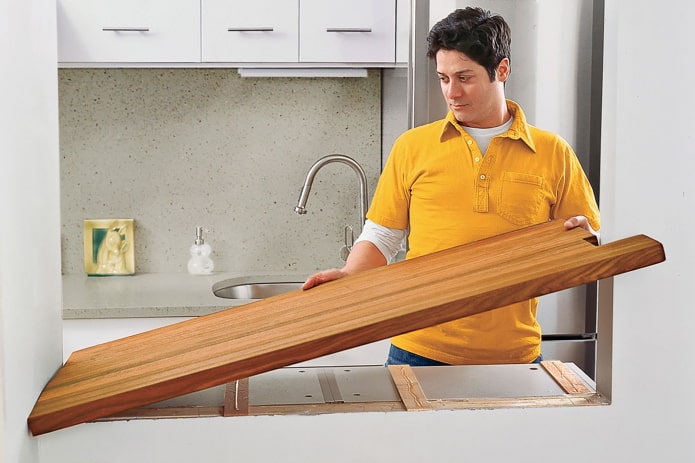

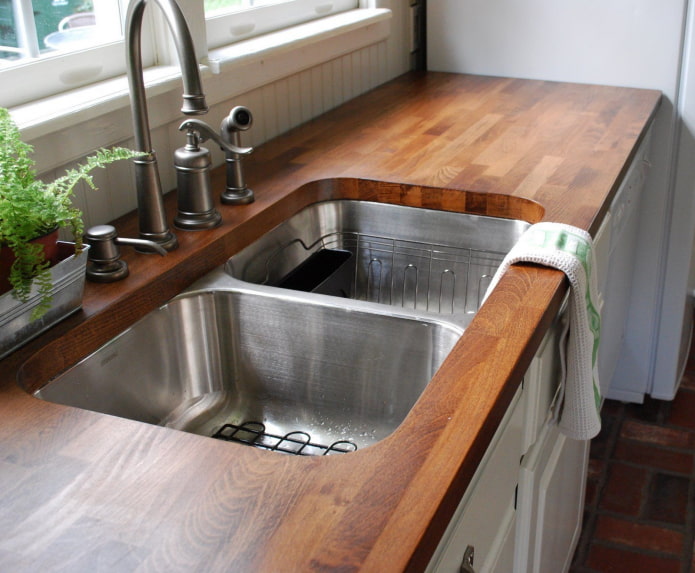
Made of concrete
This material is especially good for a loft-style kitchen. Concrete products are in demand in various versions, from flower pots to art sculptures. The countertop is no exception, it turns out inexpensive and original, especially if you think through the decor of the top layer.
Masters partially mix white cement with pigments, imitating the finish of marble, onyx and other veined rocks. You can reproduce the fashionable terrazzo technique by adding stone chips, beads, shells or decorative soil for aquariums to the solution.
Installation nuances
The concrete solution is poured into a wooden formwork. It is assembled according to preliminary drawings, taking into account the holes for the sink and hob. To increase the strength of the slab, a reinforcing mesh or fiber is used. After complete hardening, concrete surfaces are polished, treated with a protective impregnation and covered with some decorative composition.
Advantages and disadvantages
Concrete is a specific material with a rough texture, but this is what makes it unique and charming. Among other advantages: environmental friendliness, resistance to mechanical impacts and the ability to create countertops of any shape. However, the porous surface of concrete absorbs grease and dirt, which makes it look sloppy over time.
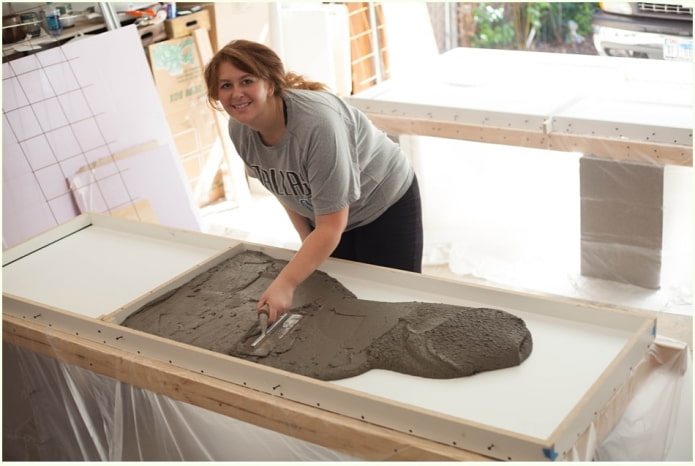

From chipboard
Particleboard is the most inexpensive and easy-to-process material. For those who like to frequently change their interior design, there is no better option. They try to cut the countertop from a single sheet of chipboard – this improves its strength characteristics. The boards are sold laminated with imitation of different textures: wood, marble, granite and others. But it is more practical to glue a sheet of HPL plastic to the base, which protects well from moisture, household chemicals and damage.
The most vulnerable place of chipboard boards is the ends, through which water can penetrate. Therefore, it is important to treat the cut areas with a sealant and cover with edge tape or an aluminum strip.
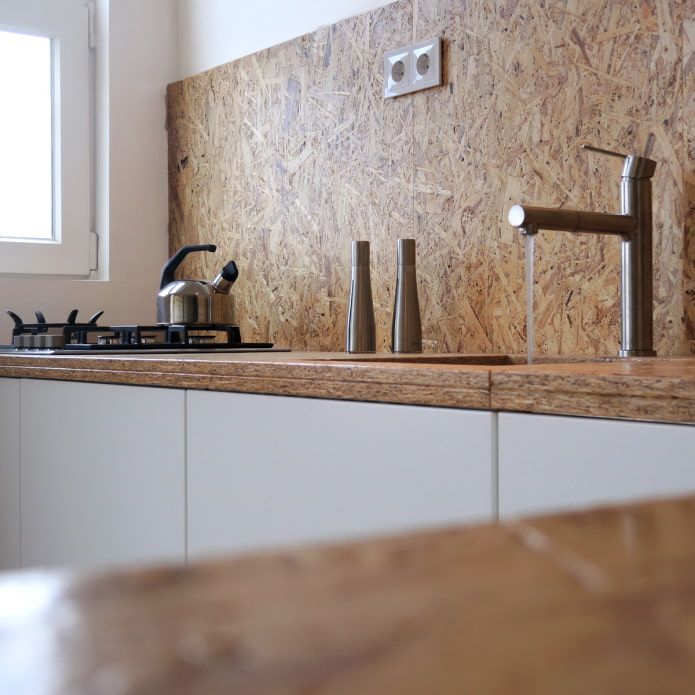
From laminate
This material can be used for a countertop instead of a natural board. It is important to make enhanced protection from water and the coating will last no less than wood.
We will need:
- Treat all locking joints with a sealant or special protective impregnation.
- Glue end caps around the perimeter.
There is no point in purchasing laminate specifically for kitchen surfaces. But if it is left over after renovation, you should not refuse such a decision.
You need to handle the material in the kitchen carefully: do not forget about cutting boards and hot pads, and do not leave spilled water on it.
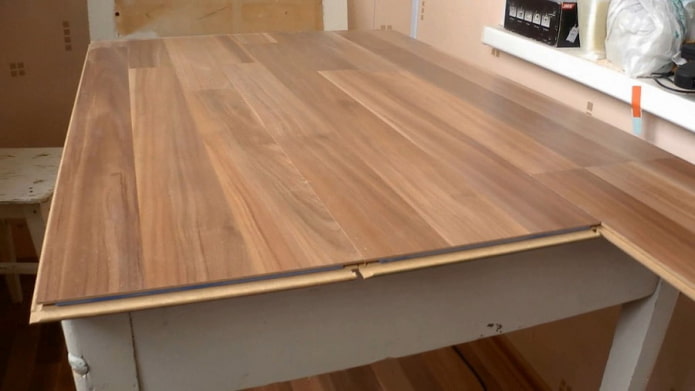
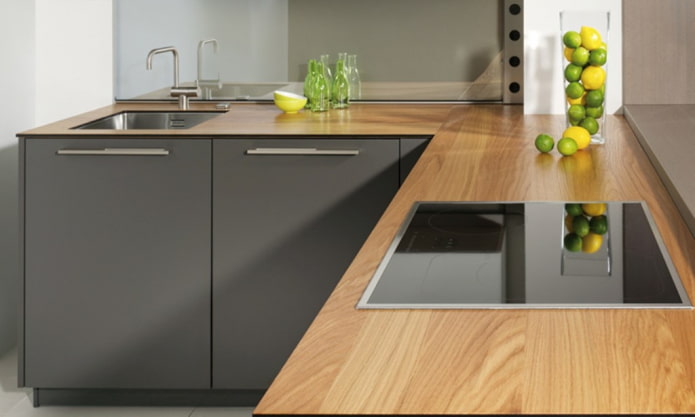
If you decide to make a countertop with your own hands, it is important to soberly assess your strengths. And choose the option that seems less labor-intensive and costly. Then homemade designs will not be inferior to factory ones and will become the best praise for your skill.
Now reading:
- Design and layout ideas for a 22 m² studio: over 40 interior photos
- Curtains with patterns: 70+ photos in the interior, current ideas for print design.
- Making Large Flowers from Corrugated Paper: Step-by-Step Master Class with Photos and Videos
- 15 Creative Bedroom Decorating Ideas (40 Inspiring Photos)
- How to choose a cornice for stretch ceilings? – types of installation and examples (27 photos)